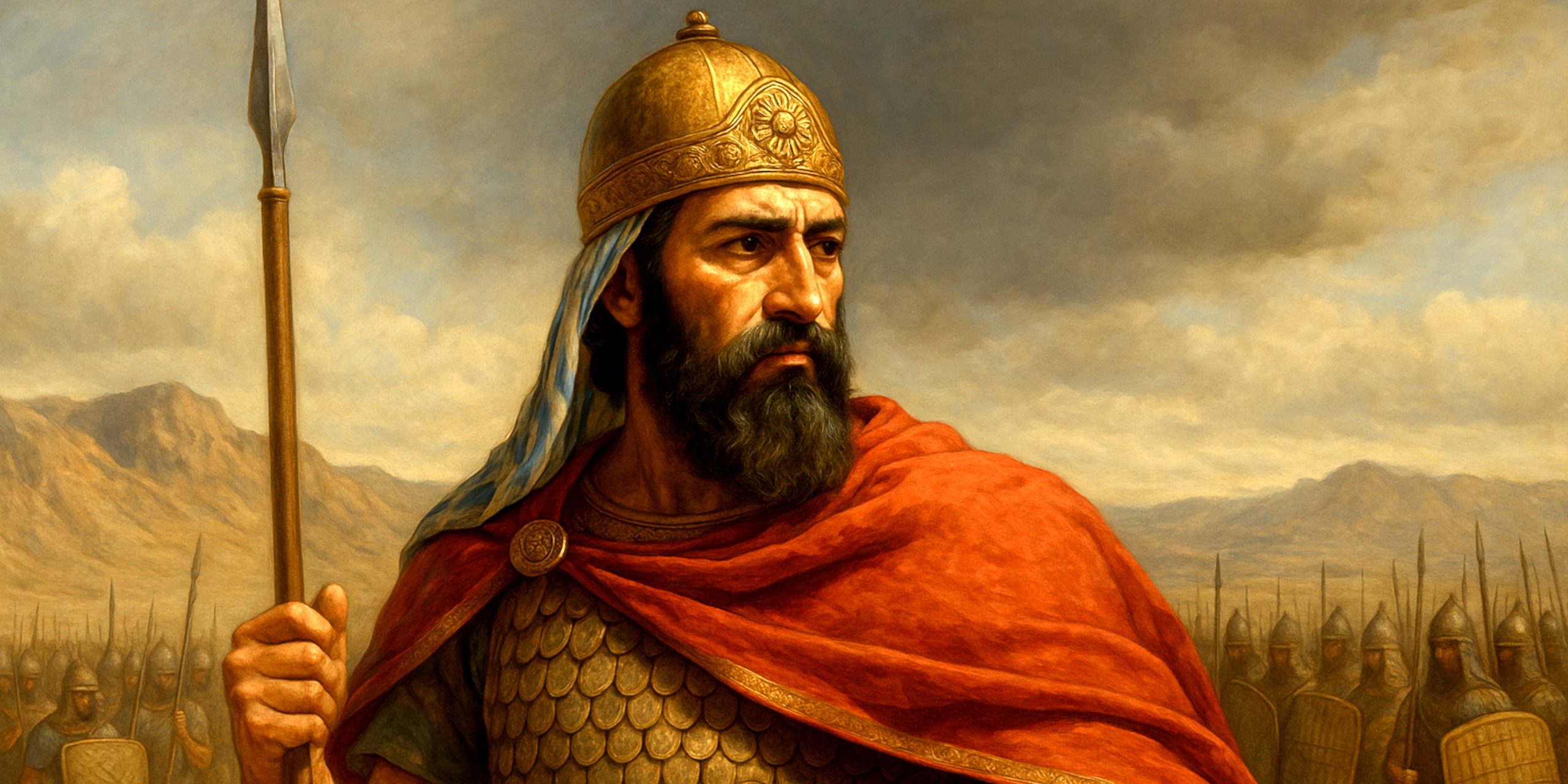
I have always found Cambyses II a figure wrapped in both authority and unease. His reign sits between the confident rise of Cyrus the Great and the polished order of Darius I, which gives his story an edge that later writers were quick to exploit. Sorting fact from accusation becomes part of the historical work. What emerges is a ruler who expanded the Persian Empire to its greatest size up to that point, yet whose legacy was darkened by accounts that may say more about political rivalry than truth.
Cambyses ruled from 530 to 522 BC. He inherited a unified and ambitious empire and pushed it further into Egypt. That achievement alone deserves more credit than it is usually given. Egypt at this time was wealthy, well defended and confident in its own antiquity. Taking it required more than simple muscle. It needed planning, logistics and a clear sense of timing.
Below is what the evidence allows us to say with some confidence, and where the picture remains more shadowed.
Origins and Reign Overview
Cambyses was the son of Cyrus the Great and Cassandane, a noble Persian woman with strong Achaemenid lineage. Contemporary administrative tablets show a functioning central court under his rule, which is not the work of a man spiralling into chaos as later Greek writers claimed.
He consolidated control in Mesopotamia, kept the imperial administration intact and prepared the campaign that would define his reign, the conquest of Egypt. Whatever his personal temperament, he ruled an empire that continued to expand and remained coherent during his absence on campaign. That tells me he had firmer control than some ancient writers would admit.
Arms and Armour of His Era
Cambyses did not leave us personal armour in the archaeological record, but Persian equipment of the late sixth century BC is well represented in reliefs and finds.
Persian elite troops of his time typically used:
- Scale corselets made of bronze or iron, stitched to linen or leather.
- Tall tiara style soft helmets or felt caps, and sometimes bronze helmets among elite guards.
- Short akinakes swords with leaf shaped blades, often carried in decorative scabbards.
- Spear armed infantry with large reed or wicker shields covered in hide, surprisingly light but resilient.
- Light cavalry equipped with javelins, bows and akinakes blades.
These tools were suited for long campaigning. The Persians favoured mobility, distance fighting and layered tactics over close formation shock. That approach served Cambyses well when facing the Egyptians, whose infantry placed heavy emphasis on shields and axes.
Battles and Military Acumen
Cambyses’ crowning military achievement was the conquest of Egypt in 525 BC. The decisive engagement took place near Pelusium. Herodotus gives a dramatic account, but the strategic picture is fairly clear even when the details wobble.
Cambyses made full use of naval support from the Phoenician cities under Persian rule. Egypt depended heavily on the Nile Delta, and once those coastal approaches were compromised, the Egyptian army was forced into a defensive fight it could not win. Cambyses showed shrewd judgement by bringing local powers like the Arabs into alliance, allowing a desert crossing that caught the Egyptians at a disadvantage.
The campaign was swift and disciplined. Memphis fell soon after Pelusium. Evidence from administrative papyri suggests that Cambyses left Egyptian bureaucracy largely intact. That is not the decision of a reckless tyrant, but of a ruler who understood the value of continuity.
His supposed failed expedition into Nubia and the legendary disaster of the army sent to the Siwa Oasis remain debated. Archaeologists have yet to find conclusive evidence for that lost force. Greek historians were often happy to emphasise Persian misfortunes. Until firmer traces emerge, caution is sensible.
Character and Reputation
Cambyses’ image was shaped by writers working under Darius I, who seized the throne after Cambyses’ death. That alone should make us wary. Tales of madness, sacrilege and brutality read like moral lessons crafted to legitimise a new king. Cuneiform records offer a quieter picture, one of a ruler who issued standard economic orders and temple donations.
My feeling is that Cambyses was a harsh conqueror but not the unhinged figure of Herodotean drama. He ruled during a transitional moment when the empire was testing its limits. Any misstep would have carried political consequences, and those consequences wrote the narrative we have inherited.
Where to See Artefacts from His Reign
You can find material from Cambyses’ time scattered across major museum collections.
- The British Museum holds administrative tablets dated to his reign, which hint at the machinery of his court.
- The Louvre exhibits Egyptian pieces that bear early Achaemenid marks of control, showing how Persia integrated local traditions.
- The Metropolitan Museum of Art houses Achaemenid weapons and ceremonial items from the period immediately before and after Cambyses, which reflect the equipment his troops likely used.
- The Egyptian Museum in Cairo contains reliefs and inscriptions that record the final Saite period and the Persian takeover.
There is no surviving portrait of Cambyses himself, but the material record of his era provides a steady, understated insight into his rule.
Latest Archaeology and Ongoing Research
Recent work in the Nile Delta has produced new stratigraphic layers from the late Saite and early Persian periods. These layers help refine our timeline for the fall of Egyptian strongholds during Cambyses’ campaign.
Excavations at Tell el Habuwa, near Pelusium, have revealed military installations that match the expected Persian movements during the invasion. The interpretation is still developing, but it strengthens the view that the conquest involved coordinated assaults rather than reckless charges.
In Iran, continued study of Persepolis tablets gives us a more stable picture of imperial administration during Cambyses’ rule. These records suggest consistent rationing systems, supply distribution and communications, all of which contradict the idea that he plunged the empire into mismanagement.
Seven Swords Takeaway
I think Cambyses II deserves reassessment. The more I read the archaeological evidence, the more I see a capable if severe ruler whose reputation was reshaped by political necessity after his death. His conquest of Egypt was one of the most impressive achievements of the early Achaemenid Empire. The stories of madness might contain a kernel of truth, yet they also echo the anxieties of a court eager to justify a new line of kings.
To study Cambyses is to sift through layers of narrative, politics and material traces. The work is demanding, but it reveals a ruler far more complex than the caricature we inherited.
Watch the documentary:



